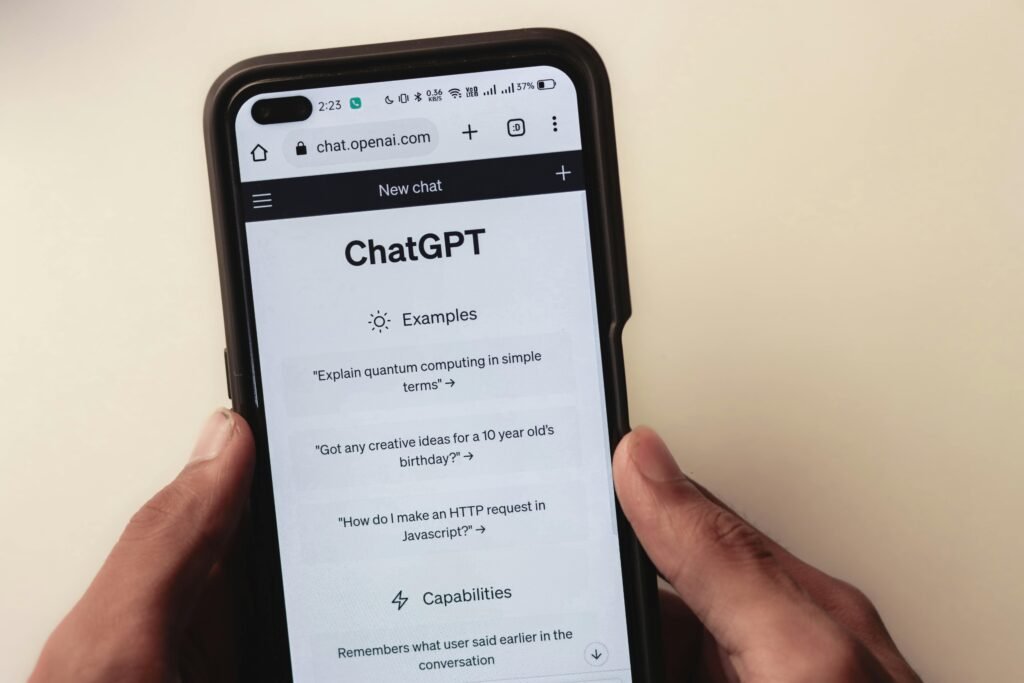In 2022, the world of writing experienced a significant shift with the introduction of ChatGPT, an AI-powered writing tool. Since its release, AI writing has gained immense popularity, revolutionizing the way we generate content. AI writing utilizes artificial intelligence, specifically GPT3, to create original pieces such as blog posts and headlines. While detecting AI writing can be a challenge, there are indicators to watch out for, including inconsistencies in tone and style, a lack of personal touch, repetitive language, and inaccuracies. Fortunately, there are tools like Originality.ai and GPTZero that can help identify AI-generated content, with Originality.ai being a top choice due to its user-friendly interface and advanced natural language processing capabilities.

Introduction
AI writing has become increasingly popular since the release of ChatGPT in 2022. As technology advances, artificial intelligence is being utilized more and more to generate original content, such as blog posts and headlines. AI writers, often based on GPT3, utilize a large language model to predict word placement and create coherent sentences. While AI writing offers numerous benefits, there are also challenges in detecting and distinguishing it from human-written content.
Challenges in Detecting AI Writing
– Inconsistency in tone and style
One of the challenges in detecting AI writing is the inconsistency in tone and style. AI-generated content often lacks a consistent writing style, making it stand out from the more consistent and personal touch of human writing. The absence of a unique voice or an identifiable author can be indicative of AI writing.
– Lack of personal touch
Another challenge is the lack of personal touch in AI writing. AI-generated content tends to lack the emotions, personal anecdotes, and subjective viewpoints that human writers bring to their work. It can feel mechanical and devoid of personality, making it easier to identify as AI-generated.
– Repetitive language
Repetitive language is also a common indicator of AI writing. AI models are trained on large datasets, which may result in producing certain phrases or patterns of language repeatedly. When there is a noticeable repetition of phrases or sentence structures, it suggests that the content might have been generated by an AI.
– Inaccuracies
Inaccuracies in the content can also indicate AI writing. Despite their immense capabilities, AI models are not infallible and can make mistakes. Inaccurate information, factual errors, or inconsistencies within the content can be telltale signs of AI-generated text.
Indicators of AI Writing
To effectively detect AI writing, there are specific indicators to look out for. These indicators overlap with the challenges mentioned earlier.
– Inconsistency in tone and style
As previously mentioned, AI writing often exhibits inconsistency in tone and style. Paying attention to fluctuations in writing style and the absence of a distinct voice can signify the use of AI.
– Lack of personal touch
The absence of personal touch or subjective viewpoints is another indicator of AI writing. Human writers often infuse their work with personal experiences, emotions, and opinions, which can be missing in AI-generated content.
– Repetitive language
Repetitive language, including the excessive use of certain phrases or sentence structures, can point towards AI-generated content. When the content appears formulaic or lacks originality, it is likely machine-generated.
– Inaccuracies
Inaccuracies in the information provided are strong indications of AI writing. Mistakes or inconsistencies in facts, data, or even grammar can reveal the limitations of the AI model’s training data.
AI Content Detection Tools
As the demand for AI writing increases, the need for effective content detection tools arises. These tools help identify AI-generated content and assist content reviewers in ensuring the authenticity and originality of the material. Two notable AI content detection tools are Originality.ai and GPTZero.

Originality.ai
– Introduction to Originality.ai
Originality.ai is one of the leading AI content detection tools available. It utilizes natural language processing algorithms to detect AI-generated content accurately. Its purpose is to help creators and readers distinguish between machine-generated and human-written text.
– How Originality.ai works
Originality.ai uses algorithms that analyze the language patterns, sentence structures, and other characteristics of the text to determine its origin. By comparing the given text to a vast database of known AI models and patterns, the tool can identify if the content is likely to be AI-generated.
– Features of Originality.ai
Originality.ai offers various features to make content detection user-friendly and efficient. It provides a comprehensive analysis of the text, highlighting potential AI-generated sections and providing a confidence score for each identified instance. The tool also allows users to compare the given text against specific AI models to fine-tune and customize the detection process.
– User-friendly interface for scanning text
A notable aspect of Originality.ai is its user-friendly interface. It offers a straightforward process for scanning text, making it accessible to users with varying technical backgrounds. The clear presentation of results facilitates the identification of AI-generated content, assisting content reviewers in their assessments.
GPTZero
– Introduction to GPTZero
GPTZero is another notable AI content detection tool. It is specifically designed to detect content generated by GPT3-based AI models, which are widely used for AI writing.
– How GPTZero works
GPTZero utilizes deep learning techniques to analyze the language and context of the given text. By comparing the patterns and structures in the content to known GPT3 models, GPTZero can identify the presence of AI-generated text.
– Features of GPTZero
GPTZero offers features that aid in the identification and analysis of AI-generated content. It provides detailed reports on the content, highlighting specific sections that are likely to be machine-generated. Users can analyze the language patterns, stylistic choices, and other indicators to determine if AI has been involved in the writing process.

Benefits of Using AI Content Detection Tools
The use of AI content detection tools brings several benefits when dealing with the detection of AI-generated content.
– Improved accuracy in detecting AI-generated content
AI content detection tools, such as Originality.ai and GPTZero, significantly improve the accuracy of detecting AI-generated content. These tools leverage sophisticated algorithms and machine learning techniques to identify subtle indicators and patterns that distinguish AI writing from human writing. They provide content reviewers with reliable and efficient means of detecting and evaluating AI-generated text.
– Time-saving for content reviewers
With the increasing volume of content produced online, manually identifying AI-generated content can be time-consuming and challenging. AI content detection tools help save time for content reviewers by automating the detection process. By flagging potential instances of AI writing, these tools allow reviewers to focus their attention on analyzing and evaluating the flagged content more efficiently.
– Prevention of plagiarism and maintaining originality
AI content detection tools play a crucial role in preventing plagiarism and maintaining the originality of content. By detecting AI-generated text, these tools help content creators and publishers ensure that their work is not being unlawfully reproduced or repurposed without proper attribution. They enable creators to protect their intellectual property and maintain the integrity of their original work.
– Useful for identifying potential copyright infringements
In addition to preventing plagiarism, AI content detection tools aid in identifying potential copyright infringements. By comparing the given text with a vast database of known AI models and copyrighted material, these tools can detect instances where AI-generated content may violate copyright laws. This feature helps content creators and copyright holders actively protect their rights and take necessary actions against infringement.
Application of AI Writing in Various Industries
The rise of AI writing has found extensive application in various industries, transforming the way content is created and delivered.
– Journalism and news
AI writing has made an impact in journalism and news reporting. Automated systems can quickly generate news articles based on real-time data and provide timely updates. These systems assist journalists in gathering information, summarizing reports, and even generating personalized news feeds for readers. However, ethical considerations and the potential for bias remain important factors to address in this context.
– Content creation and marketing
The use of AI writing in content creation and marketing has gained popularity. AI-generated content can help businesses produce large volumes of articles, blog posts, and social media content efficiently. This streamlines content creation processes and allows marketing teams to focus on other strategic activities. AI writing can also aid in optimizing content for search engines, improving the visibility and reach of the produced material.
– E-commerce and product descriptions
AI-generated content plays a significant role in e-commerce, particularly in the creation of product descriptions. With the ability to generate detailed and engaging descriptions at scale, AI writing helps businesses enhance their product listings and attract potential customers. By generating unique and informative content for each product, AI contributes to a more efficient and dynamic e-commerce experience.
– Legal and policy document automation
AI-generated content finds application in the legal and policy domains, primarily in the realm of document automation. AI writing can help generate legal contracts, policy documents, and other legal materials with speed and accuracy. Automation reduces the time and effort required to create such documents, improving efficiency and freeing up legal professionals to focus on more complex tasks.
Concerns and Ethical Considerations
While AI writing offers numerous benefits, it also gives rise to valid concerns and ethical considerations.
– Misuse and manipulation of AI-generated content
The potential for misuse and manipulation of AI-generated content is a significant concern. AI models can be utilized to spread false information, manipulate public opinion, or create deceptive content. The responsible use of AI writing technology is crucial to avoid misinformation and its societal impacts.
– Job displacement for human writers
The increasing prevalence of AI writing raises concerns about potential job displacement for human writers. As AI becomes more capable of generating quality content, there is a risk of reduced demand for human writers. It is essential to consider the implications of AI writing on the job market and explore ways to retrain and upskill individuals in response to changing industry needs.
– Ensuring transparency and disclosure
Transparency and disclosure are vital aspects to address in AI writing. Content generated by AI should be clearly identified as such, ensuring that readers are aware they are engaging with AI-generated content. Clear disclosure helps maintain transparency, accountability, and trust in the digital landscape.
– Potential biases in AI-generated content
AI models are trained on large datasets, which may inadvertently contain biases present in the data. Biases can manifest in AI-generated content, leading to discrimination or perpetuating existing inequalities. It is crucial to continually evaluate and mitigate biases in AI models to ensure fair and inclusive content creation.
Conclusion
The year 2022 marked the rise of ChatGPT, ushering in a new era of AI writing. As AI-generated content becomes increasingly prevalent, the need for reliable and effective content detection tools arises. Originality.ai and GPTZero, among others, offer solutions to identify AI-generated text, aiding content reviewers and creators. These tools contribute to maintaining originality, preventing plagiarism, and protecting copyright.
AI writing finds application in journalism, content creation, e-commerce, and legal domains, transforming industries and streamlining processes. However, ethical considerations surrounding the misuse of AI-generated content, job displacement, transparency, and biases must be actively addressed. As AI writing continues to evolve, it is important to ensure responsible and ethical implementation, while also harnessing the benefits it brings to the future of content creation.






